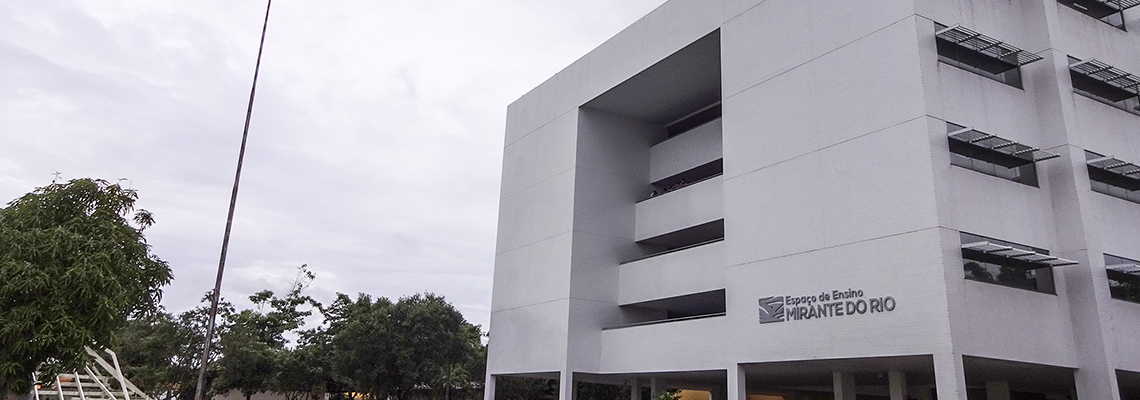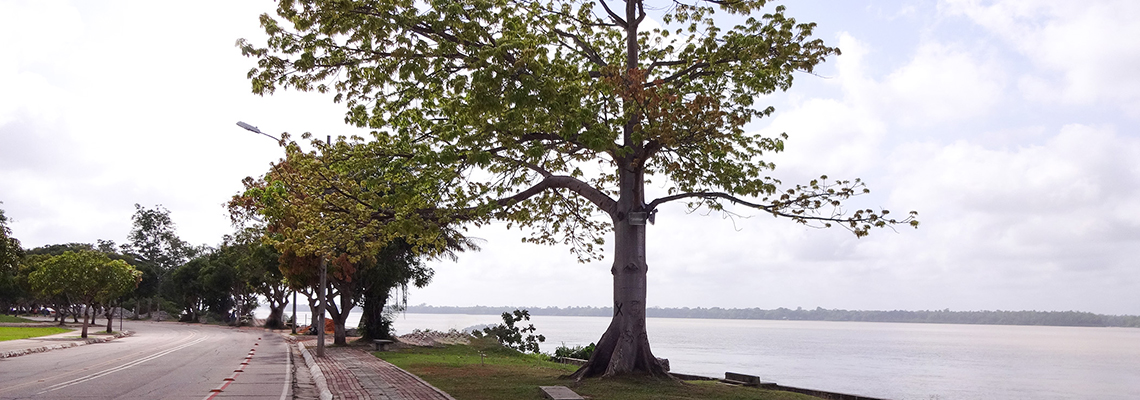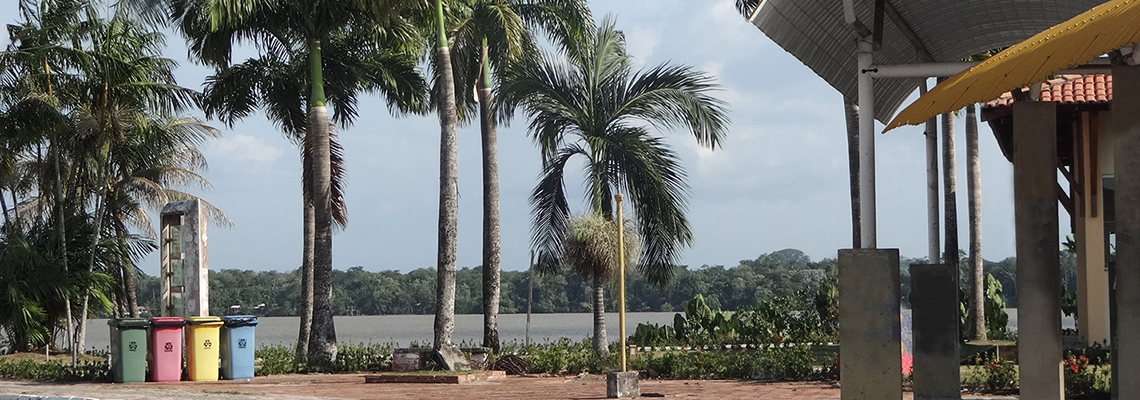Base Laboratory (NPO / UFPA):
With benches and equipment for simultaneous use of 25 researchers, with all necessary equipment (high speed refrigerated centrifuges, darkroom, vertical and horizontal electrophoresis system, photodocumentation system and sources for electrophoresis); cabinets for consumables, cabinet for reagents, refrigerators, freezers; workbenches for small equipment (magnetic stirrers, vortex, microcentrifuge, analytical balance, precision scale, water bath, pH meter, pipettors, among others).
This laboratory has:
(1) Contaminated Area: this comprises three rooms: DNA Extraction Room; RNA extraction room; Thermocycling room;
(2) Biological Material Storage Room;
(3) In vivo Manipulation Laboratory: management room for immunosuppressed small animals (mouse);
(4) Interference Laboratory: intended for the execution of in vivo and in vitro interference experiments;
(5) Sterilization: area for decontamination of materials, disposal, purging with autoclave and hospital waste;
(6) Cleaning: The cleaning and parqueting room has negative pressure;
(7) Omics Laboratory: This sector brings together the great equipment for the analysis of genomes and nucleic acids.
Multiuser: Yes (X) No ( )
Laboratory of Pathological Anatomy I and II:
Installed in two separate environments:
I - Immunohistochemistry and Molecular Pathology;
II - TMA and Specialized Microscopy.
The main equipment available are GX Benchmark Equipment, Window - Roche; TMA Grand Master; Microscope Zeiss Imager M2 and other auxiliaries as -20 ° C freezer (1); refrigerator (1), water bath (2) and microcomputers.
Multiuser: Yes (X) No ( )
Laboratory of Structural Biology:
The laboratory has an infrastructure with small and medium equipment, distributed in several rooms: (1) Biological sample preparation room for microscopy with exhaust hood, oven, pH meter, refrigerator, high precision scale, stereoscopic microscope, centrifuges; (2) Electron microscopy room with electron microscope Zeiss EM 906; (3) Confocal Microscopy Room with confocal microscope; and still fluorescence microscope; Zeiss Axiophot Optical Microscope and a Photographic Laboratory.
Multiuser: Yes (X) No ( )
Human Cytogenetic Laboratory:
The laboratory has 65m2 of construction. The main equipment available are: three laminar flow hoods; a bench flow; two CO2 incubators; an O2 stove; two cylinders of nitrogen; a microwave; two pH meters; three centrifuges, two 1000rpm bench centrifuges and one non-refrigerated microcentrifuge, for eppendorf tubes; two refrigerators; three freezers, one freezer (-70C) and two vertical freezers (-20ºC); three bacteriological stoves; a drying oven; four optical microscopes; an inverted microscope and an immunofluorescence microscope; an image capture system; an automatic karyotype analysis software; fluorescence in situ hybridization analysis software; an optical photomicroscope; a deionized water distiller and an autoclave.
Multiuser: Yes (X) No ( )
Laboratory of Cell Culture / Flow Cytometry:
Anteroom for cleaning and stock of material; main room for preparation of reagents, reaction handling for cytometry, storage, observation and monitoring of cell cultures, storage and preservation of refrigerated materials for use in culture and flow cytometry; cell manipulation room, which includes the class II biological safety cabinet for handling in a sterile environment of cells and reagents.
The main equipment available are: A FACSVerseTM BD flow cytometer; a CO2 greenhouse (Panasonic); an inverted microscope (Medilux); a class 2 biological safety cabinet (Filtex) and two refrigerators.
Multiuser: Yes (X) No ( )
Laboratory of Human and Medical Genetics:
Installed in an area of about 500m2. The main equipment available are: four automatic DNA sequencers (three ABI 3130 and one ABI 3500 from Applied Biosystems); five real-time PCR equipment (three from Applied Biosystem and two Illumina); 12 PCR devices (all from Life Technologies); gel electrophoresis equipment with denaturation gradient (DGGE); 10 -20 °C freezers and one -70 °C freezer; 10 refrigerators, four water baths; two low speed refrigerated centrifuges (up to 5,000 rpm), five microcentrifuges; a high speed refrigerated ultracentrifuge (25,000 rpm); three ultraviolet transilluminators; a NanoDrop; a Qwibt; 10 vats for vertical electrophoresis and five vats for horizontal electrophoresis; a system for the distillation, deionization and purification of water; 25 microcomputers; two 3000-volt electrophoresis sources; five 500-volt electrophoresis sources; four minigel tanks; two vertical autoclaves and two drying greenhouses; four binocular microscopes; three laminar flow hoods; an ice machine; two Shaker with temperature regulation, a DELL Power Edge 1800 server etc. Recently, a System for detection of nucleic acid molecules was acquired in real time via OpenArray type PCR, manufactured and commercialized by its Brazilian subsidiary Applied Biosystems.
Multiuser: Yes (X) No ( )
Laboratory of Gene Interference:
Room for keeping cells that will be used in the interference procedure; storage and handling of reagents for interference testing; performance of the interference experiments.
The main equipment available are: A CO2 greenhouse (Thermo); a refrigerated centrifuge (Fanem); a refrigerated shaker (New Brunswick Scientific) and a refrigerator.
Multiuser: Yes (X) No ( )
Laboratory of DNA Polymorphism:
Implanted in an area of approximately 200m2. The large equipment available includes: ION High Performance Genetic Analyzers; Genetic Analyzer 3130, 3730, 5500; HPLC; Real-time PCR, primer synthesizer (391 Synthesizer Perkin-Elmer); Denaturing gradient gel electrophoresis system (DGGE); thermocyclers (MJ Research, with capacity for 60 and 16 samples); nucleic acid hybridizer; common digital scale; high precision digital scale; vertical electrophoresis tanks; horizontal electrophoresis vats; laminar flow hood; water distiller; reverse osmosis equipment; tube stirrer with temperature control; extractor hood, -800 °C freezer; -20 °C freezers, refrigerators; ice maker; greenhouses (37 ° C and 100 ° C); refrigerated centrifuge; microcentrifuge; water bath with shaking; simple water bath; thermoblocks; Ultraviolet transilluminator; microcomputers (6 PCs and 2 Macintosh); scanner, etc. The computational structure of the LPDNA is used in the multiuser form by several groups of the POSGBM. This consists of a cluster of computers with 8 processing nodes (each node consisting of four Intel Xeon E5530 Quad Core 2.40GHz CPUs with 16 cores and 48GB of RAM) and one main node (with a Dual Intel Xeon E5530 Quad processor Core 2.40GHz and 24GB RAM), a server with two Intel Xeon E5440 Quad Core 2.87GHz with 8 cores and 24GB of RAM, two storages totaling 40Tb of memory for data storage. As for the new generation sequencing LPDNA presents as a platform for sequencing Ion Torrent (Life Technologie) and Ion PGM, which certainly reflects on the quality of the research carried out, as well as on the reduction of time and cost of sequencing.
Multiuser: Yes (X) No ( )
Address of the Labs
Oncology Research Center
4487, Mundurucus Street, on the corner of Barão de Mamoré Street, Guamá, Belém/PA, Zip Code: 66073-005
Located in the premises of João de Barros Barreto university Hospital
2nd Floor of UNACON Building
Contact
Phone number: (091) 3201-67789
Coordinators
Ândrea Kely Campos Ribeiro dos Santos
André Salim Khayat
Samia Demachki
E-mails
This email address is being protected from spambots. You need JavaScript enabled to view it.
This email address is being protected from spambots. You need JavaScript enabled to view it.
This email address is being protected from spambots. You need JavaScript enabled to view it.
Administrative Assistants
Antonio André Conde Modesto | E-mail: This email address is being protected from spambots. You need JavaScript enabled to view it.
Taíssa Maíra Thomaz Araújo | E-mail: This email address is being protected from spambots. You need JavaScript enabled to view it.








